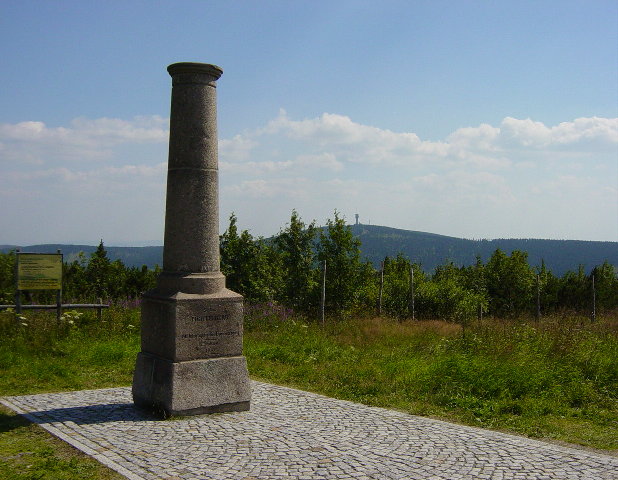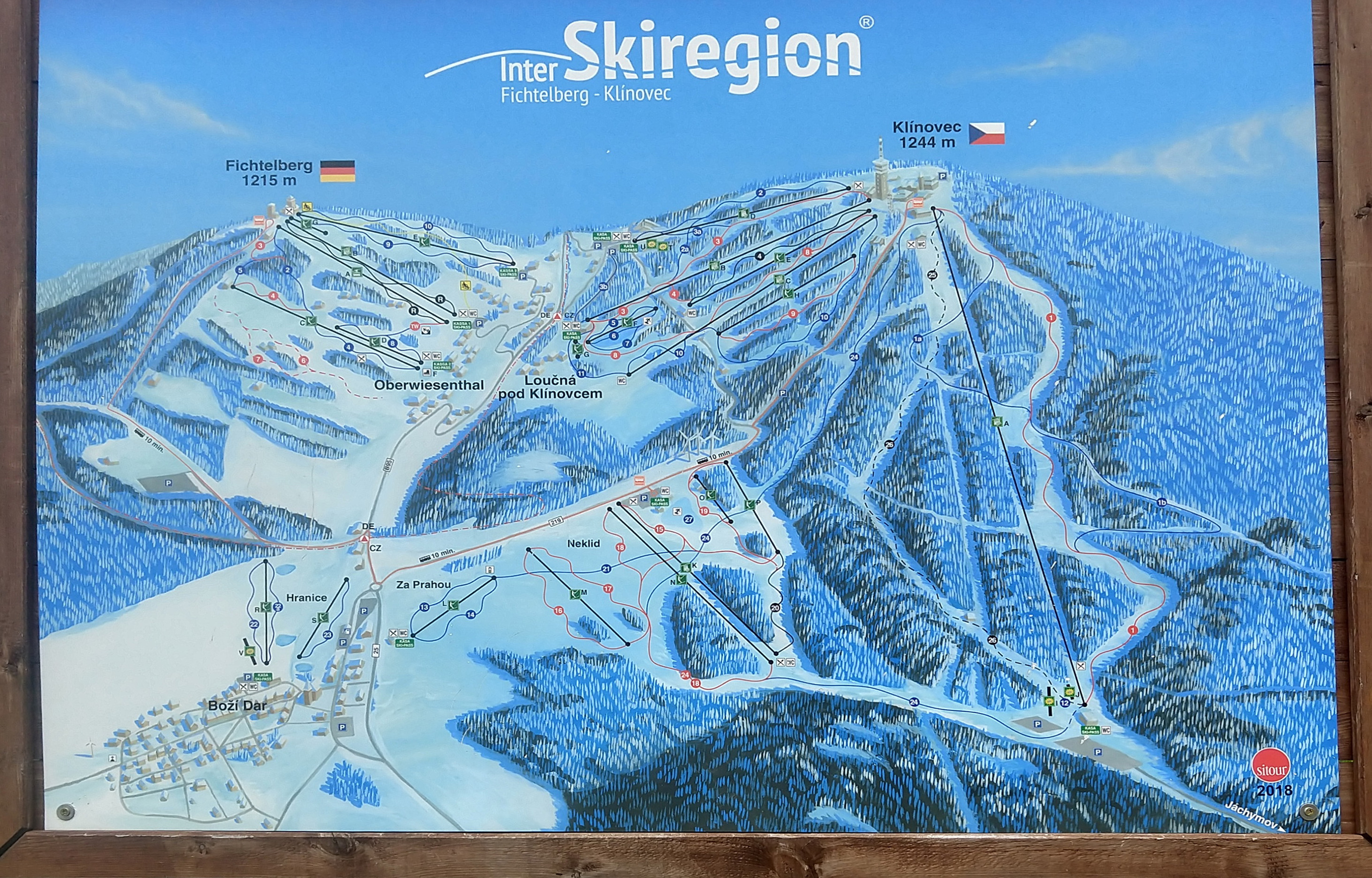|
Fichtelberg
The Fichtelberg () is a mountain with two main peaks in the middle of the Ore Mountains in the east German state of Saxony, near the Czech border. At above sea level, the Fichtelberg is the highest mountain in Saxony, the second highest in the Ore Mountains and used to be the highest mountain in East Germany. Its subpeak is high. Location The Fichtelberg rises within the Central Ore Mountains in the Ore Mountains/Vogtland Nature Park around 1.5 kilometres north of the German-Czech border. At the southern foot of the mountain lies the highest town in Germany: the resort of Oberwiesenthal in the Pöhlbach valley. About 750 metres south-southwest is the less prominent subpeak of the Fichtelberg, known as the Kleiner Fichtelberg ("Little Fichtelberg") also called the ''Hinterer Fichtelberg'' ("Rear Fichtelberg"); 1,205.6 m). About 4 kilometres south-southeast is the highest peak in the Ore Mountains: the Klínovec (''Keilberg''; 1,244 m) on the Czech s ... [...More Info...] [...Related Items...] OR: [Wikipedia] [Google] [Baidu] |
Oberwiesenthal
Oberwiesenthal (; officially Kurort Oberwiesenthal) is a town and a ski resort in the district of Erzgebirgskreis in Saxony in Germany. It is situated in the Ore Mountains, on the border with the Czech Republic, 19 km south of Annaberg-Buchholz, and 23 km northeast of Karlovy Vary. At , it is the highest town in Germany.Official web site (in German) The and goldmedalist in |
Ore Mountains/Vogtland Nature Park
The Ore Mountains/Vogtland Nature Park (german: Naturpark Erzgebirge/Vogtland) extends across the upper slopes of the Vogtland and Ore Mountains in southeastern Germany along its international border with Czech Republic. It is the longest nature park in Germany with a total length of 120 km. Its management organisation is the ''Zweckverband Naturpark Erzgebirge/Vogtland''. It includes the following conservation areas: *228 area natural monuments (FND) *15 protected landscapes (LSG) *41 nature reserves (NSG) *3 bird reserves Landscape The nature park has a total area of approximately 1,495 km² and is located between the White Elster river in the Vogtland region and the Freiberger Mulde river in the Eastern Ore Mountains. It lies at an elevation of about 500 metres above sea level (NN) rising to 1,215 metres at the summit of the Fichtelberg, and includes all the important conservation areas, forests and natural monuments in the vicinity of the Elstergebirge and O ... [...More Info...] [...Related Items...] OR: [Wikipedia] [Google] [Baidu] |
Central Ore Mountains
The Central or Middle Ore Mountains (german: Mittlere Erzgebirge or ''Mittelerzgebirge'') is a natural region that forms the central-western part of the Ore Mountains in the German federal state of Saxony. It is part of the overarching unit, the Saxon Highlands and Uplands. It forms the eastern part of the former major units, the Lower Western Ore Mountains (''Unteres Westerzgebirge'', 423) and Upper Western Ore Mountains (''Oberes Westerzgebirge'', 421) and is separated from the Eastern Ore Mountains in the east by the (included) valley of the Flöha, and from the Western Ore Mountains in the west by the (excluded) valley of the Schwarzwasser and, below its mouth, by the Zwickauer Mulde.Map of natural regions in Saxony at www.umwelt.sachsen.de (pdf, 859 kB) The upper ... [...More Info...] [...Related Items...] OR: [Wikipedia] [Google] [Baidu] |
Klínovec
Klínovec (german: Keilberg) is the highest peak of the Ore Mountains, located in the Czech Republic's part of the mountains at . There is an 80 m TV broadcasting tower on the top of the mountain and a 24 meter high lookout tower. From the south side, the ''Jáchymov - Klínovec'' chairlift leads to the top (length 2,168 m and elevation 480 m), from the north side leads another chairlift ''Dámská'' (length 1,210 m and elevation 232 m). Location Klínovec lies in northern Bohemia, on the border between the Karlovy Vary and Ústí nad Labem regions. The summit and western slopes are located in the municipal territory of Jáchymov, about northeast of the town; the eastern slopes belongs to Loučná pod Klínovcem. The summit is located about southeast of the Czech-German border. Access to the peak is provided by a road from Boží Dar, tourist trails (marked red and yellow), or a chairlift from Jáchymov, running all year round. These days, Klínovec is a popular regional ski ... [...More Info...] [...Related Items...] OR: [Wikipedia] [Google] [Baidu] |
Saxony
Saxony (german: Sachsen ; Upper Saxon: ''Saggsn''; hsb, Sakska), officially the Free State of Saxony (german: Freistaat Sachsen, links=no ; Upper Saxon: ''Freischdaad Saggsn''; hsb, Swobodny stat Sakska, links=no), is a landlocked state of Germany, bordering the states of Brandenburg, Saxony-Anhalt, Thuringia, Bavaria, as well as the countries of Poland and the Czech Republic. Its capital is Dresden, and its largest city is Leipzig. Saxony is the tenth largest of Germany's sixteen states, with an area of , and the sixth most populous, with more than 4 million inhabitants. The term Saxony has been in use for more than a millennium. It was used for the medieval Duchy of Saxony, the Electorate of Saxony of the Holy Roman Empire, the Kingdom of Saxony, and twice for a republic. The first Free State of Saxony was established in 1918 as a constituent state of the Weimar Republic. After World War II, it was under Soviet occupation before it became part of the communist East ... [...More Info...] [...Related Items...] OR: [Wikipedia] [Google] [Baidu] |
River Zschopau
The Zschopau (, cs, Sapava or Šopava ) is a 130-kilometre-long river in Saxony, Germany, and a left tributary of the Freiberger Mulde. The origin of the name is not precisely documented, possibly Slavic ''skapp''; ''rock'', ''cliff'' or sorb. ''Šučici''; ''the rushing, roaring''). The Zschopau drains a catchment area of 1847 km². Course Its source is in the Ore Mountains, on the slopes of the Fichtelberg at a height of 1,070 metres, near the border with Czechia. It flows initially parallel to the Große Mittweida in a northerly direction. The Zschopau forms the boundary between the western forest district of Crottendorf and the eastern districts of Oberwiesenthal and Neudorf. After leaving the forests on the Fichtelberg, it passes the forest settlement of Crottendorf with its hamlet of Walthersdorf. In the town of Schlettau it is joined by the Rote Pfütze. It then flows through the towns of Tannenberg, Wiesa and Wiesenbad Thermal Springs. Then the Zschopau collects ... [...More Info...] [...Related Items...] OR: [Wikipedia] [Google] [Baidu] |
Ilmenite
Ilmenite is a titanium-iron oxide mineral with the idealized formula . It is a weakly magnetic black or steel-gray solid. Ilmenite is the most important ore of titanium and the main source of titanium dioxide, which is used in paints, printing inks, fabrics, plastics, paper, sunscreen, food and cosmetics. Structure and properties Ilmenite is a heavy (specific gravity 4.7), moderately hard (Mohs hardness 5.6 to 6), opaque black mineral with a submetallic luster. It is almost always massive, with thick tabular crystals being quite rare. It shows no discernible cleavage, breaking instead with a conchoidal to uneven fracture. Ilmenite crystallizes in the trigonal system with space group ''R''. The ilmenite crystal structure consists of an ordered derivative of the corundum structure; in corundum all cations are identical but in ilmenite Fe2+ and Ti4+ ions occupy alternating layers perpendicular to the trigonal c axis. Pure ilmenite is paramagnetic (showing only very weak attra ... [...More Info...] [...Related Items...] OR: [Wikipedia] [Google] [Baidu] |
Hematite
Hematite (), also spelled as haematite, is a common iron oxide compound with the formula, Fe2O3 and is widely found in rocks and soils. Hematite crystals belong to the rhombohedral lattice system which is designated the alpha polymorph of . It has the same crystal structure as corundum () and ilmenite (). With this it forms a complete solid solution at temperatures above . Hematite naturally occurs in black to steel or silver-gray, brown to reddish-brown, or red colors. It is mined as an important ore mineral of iron. It is electrically conductive. Hematite varieties include ''kidney ore'', ''martite'' ( pseudomorphs after magnetite), ''iron rose'' and ''specularite'' ( specular hematite). While these forms vary, they all have a rust-red streak. Hematite is not only harder than pure iron, but also much more brittle. Maghemite is a polymorph of hematite (γ-) with the same chemical formula, but with a spinel structure like magnetite. Large deposits of hematite are ... [...More Info...] [...Related Items...] OR: [Wikipedia] [Google] [Baidu] |
Central Europe
Central Europe is an area of Europe between Western Europe and Eastern Europe, based on a common historical, social and cultural identity. The Thirty Years' War (1618–1648) between Catholicism and Protestantism significantly shaped the area's history. The concept of "Central Europe" appeared in the 19th century. Central Europe comprised most of the territories of the Holy Roman Empire and those of the two neighboring kingdoms of Poland and Hungary. Hungary and parts of Poland were later part of the Habsburg monarchy, which also significantly shaped the history of Central Europe. Unlike their Western European (Portugal, Spain et al.) and Eastern European (Russia) counterparts, the Central European nations never had any notable colonies (either overseas or adjacent) due to their inland location and other factors. It has often been argued that one of the contributing causes of both World War I and World War II was Germany's lack of original overseas colonies. After ... [...More Info...] [...Related Items...] OR: [Wikipedia] [Google] [Baidu] |
Muscovite
Muscovite (also known as common mica, isinglass, or potash mica) is a hydrated phyllosilicate mineral of aluminium and potassium with formula K Al2(Al Si3 O10)( F,O H)2, or ( KF)2( Al2O3)3( SiO2)6( H2O). It has a highly perfect basal cleavage yielding remarkably thin laminae (sheets) which are often highly elastic. Sheets of muscovite 5 meters × 3 meters (16.5 feet × 10 feet) have been found in Nellore, India. Muscovite has a Mohs hardness of 2–2.25 parallel to the 01face, 4 perpendicular to the 01and a specific gravity of 2.76–3. It can be colorless or tinted through grays, browns, greens, yellows, or (rarely) violet or red, and can be transparent or translucent. It is anisotropic and has high birefringence. Its crystal system is monoclinic. The green, chromium-rich variety is called fuchsite; mariposite is also a chromium-rich type of muscovite. Muscovite is the most common mica, found in granites, pegmatites, gneisses, and schists, and as a contact metamorphic roc ... [...More Info...] [...Related Items...] OR: [Wikipedia] [Google] [Baidu] |
Tourmaline
Tourmaline ( ) is a crystalline silicate mineral group in which boron is compounded with elements such as aluminium, iron, magnesium, sodium, lithium, or potassium. Tourmaline is a gemstone and can be found in a wide variety of colors. The term is derived from the Sinhalese "tōramalli", which refers to the carnelian gemstones. History Brightly colored Ceylonese gem tourmalines were brought to Europe in great quantities by the Dutch East India Company to satisfy a demand for curiosities and gems. Tourmaline was sometimes called the "Ceylonese Magnet" because it could attract and then repel hot ashes due to its pyroelectric properties. Tourmalines were used by chemists in the 19th century to polarize light by shining rays onto a cut and polished surface of the gem. Species and varieties Commonly encountered species and varieties: Schorl species: : Brownish black to black—''schorl'', Dravite species: from the Drave district of Carinthia : Dark yellow to brownis ... [...More Info...] [...Related Items...] OR: [Wikipedia] [Google] [Baidu] |

-Deutschland.png)







